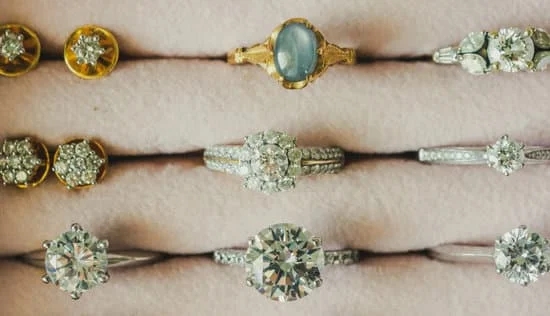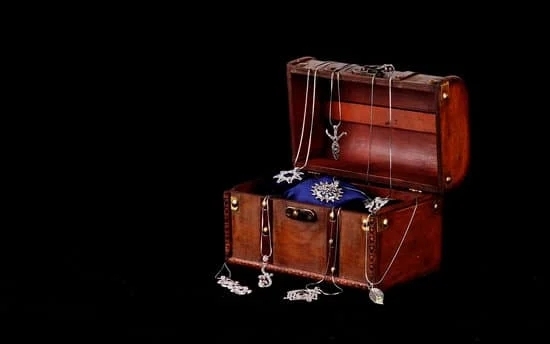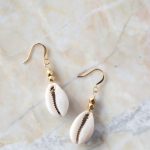The history of Egyptian jewelry is a fascinating journey that reflects the rich culture and artistic traditions of ancient Egypt. Dating back to over 5,000 years ago, Egyptian jewelry has played a significant role in the lives of the people, serving as more than just decorative pieces. From amulets to elaborate necklaces, the craftsmanship and symbolism embedded in these artifacts provide valuable insights into the beliefs and values of this ancient civilization.
Ancient Egyptian culture and art are characterized by their mastery of intricate and elaborate designs, with jewelry being no exception. The use of precious materials like gold, silver, and gemstones, combined with advanced techniques such as filigree and granulation, demonstrate the expertise of Egyptian artisans in creating stunning pieces that still captivate us today.
In this article, we will delve into the significance of jewelry in ancient Egypt, exploring the materials and techniques used in jewelry making, as well as the symbolism and meanings behind the intricate designs. We will also examine the influence of ancient Egyptian pharaohs on jewelry styles and trends, and how these pieces continue to inspire modern fashion and design. Join us on this journey through time as we uncover the legacy and impact of Egyptian jewelry on history.
The Significance of Jewelry in Ancient Egypt
Jewelry held immense significance in ancient Egyptian culture, serving not only as adornment but also as a symbol of status, power, and religious beliefs. The people of ancient Egypt believed that jewelry had magical properties and provided protection to the wearer. In fact, jewelry was often buried with the deceased to accompany them into the afterlife. The intricate designs and precious materials used in creating Egyptian jewelry reflect the advanced craftsmanship and deep-rooted cultural beliefs of this ancient civilization.
Materials used in Egyptian jewelry making included gold, silver, copper, and semi-precious stones such as lapis lazuli, carnelian, turquoise, and amethyst. They were crafted using techniques such as soldering, filigree work, granulation, and cloisonné enamel. These meticulous methods resulted in stunning pieces that showcased the skill and artistry of ancient Egyptian jewelers.
Symbols played an important role in the design of Egyptian jewelry. The use of certain motifs like the scarab beetle, lotus flower, falcon, and ankh carried symbolic meanings related to rebirth, life, protection, and eternity. Jewelry designs were also influenced by deities such as Isis and Hathor.
Understanding the symbolism behind these designs gives us insight into the spiritual beliefs of ancient Egyptians and their reverence for gods and goddesses. Modern designers continue to draw inspiration from these symbolic elements when creating contemporary Egyptian-inspired jewelry pieces.
Overall, the history of Egyptian jewelry provides a window into the rich tapestry of ancient Egyptian society – from its religious beliefs to its social structure. The legacy of Egyptian jewelry continues to captivate us today not only for its aesthetic beauty but also for its cultural significance that has transcended time.
Materials and Techniques Used in Egyptian Jewelry Making
Ancient Egyptian jewelry is renowned for its exquisite craftsmanship and intricate designs, which were made possible by the use of various materials and techniques. The most commonly used materials in Egyptian jewelry making included gold, silver, precious and semi-precious stones such as lapis lazuli, turquoise, and carnelian, as well as faience (a type of glazed ceramic). These materials were highly valued and often associated with royalty and divine symbolism.
One of the most notable techniques used in ancient Egyptian jewelry making was granulation. This intricate process involved attaching tiny beads or granules of metal to a metal surface to create elaborate patterns and designs. Another technique widely utilized was cloisonné, which involved creating compartments using thin metal strips filled with colorful glass or stone paste to form decorative patterns. Filigree work, engraving, and inlaying were also commonly employed to add detail and complexity to the jewelry pieces.
The use of these materials and techniques not only demonstrated the advanced technical skills of ancient Egyptian artisans but also reflected the cultural and religious significance of jewelry in ancient Egypt. Jewelry was not only seen as a symbol of wealth and status but also played a significant role in religious rituals, funerary practices, and as protective amulets against evil forces.
| Materials Used | Techniques Used |
|---|---|
| Gold | Granulation |
| Silver | Cloisonné |
| Precious Stones | Filigree Work |
| Semi-precious Stones | Engraving |
This emphasis on both aesthetics and symbolism speaks volumes about the importance placed on jewelry in ancient Egyptian culture. The meticulous craftsmanship combined with the use of precious materials showcases the high regard for beauty and luxury during that time period. The legacy of these materials and techniques continues to influence modern jewelry making today, ensuring that the history of Egyptian jewelry remains a timeless source of inspiration for artists and designers alike.
Symbolism and Meanings of Egyptian Jewelry Designs
One of the most fascinating aspects of the history of Egyptian jewelry is the symbolism and meanings behind its designs. Jewelry held a significant place in ancient Egyptian culture, and each piece was carefully crafted with purpose and intention. The symbols and motifs found in Egyptian jewelry were not merely decorative, but they held a deeper cultural and spiritual significance.
Many of the designs found in ancient Egyptian jewelry were inspired by the natural world. The use of symbols such as the scarab beetle, lotus flower, and the Eye of Horus reflected the Egyptians’ deep connection to their environment and their beliefs about life, death, and rebirth. For example, the scarab beetle symbolized regeneration and was often used in amulets to protect the wearer and bring them good luck.
In addition to natural symbols, ancient Egyptian jewelry also featured motifs that represented deities, pharaohs, and other religious iconography. These designs served as a way for individuals to show their devotion to particular gods or goddesses, as well as their allegiance to their ruling pharaoh.
The use of these symbols not only adorned the wearer but also conveyed a sense of identity and spirituality. Understanding the symbolism in ancient Egyptian jewelry provides valuable insights into the cultural, religious, and social beliefs of this ancient civilization.
Ancient Egyptian Pharaohs and Their Jewelry
Royal Jewelry in Ancient Egypt
In ancient Egypt, jewelry was not just a fashion statement, but also a symbol of power, status, and religious significance. The pharaohs, as the rulers of Egypt, were adorned with the most elaborate and luxurious jewelry. These pieces were not only meant for personal adornment but also served as important symbols of their divine authority.
The Extravagant Burial Jewelry
One of the most famous examples of ancient Egyptian jewelry is found in the extravagant burial chambers of pharaohs such as Tutankhamun. The richly adorned mummies were decked out with an array of jewelry made from precious metals and gemstones, showcasing the opulence and wealth of these rulers. This lavish display was not only to honor the pharaoh in the afterlife but also to showcase their power and status to future generations.
Symbolism in Pharaonic Jewelry
The jewelry worn by ancient Egyptian pharaohs was not just decorative but deeply symbolic. Each piece held specific meanings and religious significance. For example, the use of certain gemstones or motifs represented various deities or virtues that were important to the ruler’s reign. Understanding these symbols is crucial to deciphering the cultural and religious beliefs of ancient Egypt.
The history of Egyptian jewelry goes hand in hand with the rule and rituals of ancient Egyptian civilization. The intricate designs, valuable materials, and deep symbolism present in these artifacts provide valuable insights into the beliefs and values of this ancient culture.
Evolution of Egyptian Jewelry Styles and Trends
The history of Egyptian jewelry spans thousands of years and reflects the rich culture and artistic traditions of ancient Egypt. Throughout the different periods of Egyptian history, from the Predynastic period to the Roman era, jewelry played a significant role in both religious and everyday life. The evolution of Egyptian jewelry styles and trends provides valuable insights into the changing preferences, technology, and social dynamics of this ancient civilization.
One notable aspect of the evolution of Egyptian jewelry styles is the use of materials and techniques. In earlier periods, such as the Predynastic and Early Dynastic periods, jewelry was often made with simple materials like shells, bones, and wood.
However, as time progressed, Egyptians began using precious metals like gold and silver, as well as gemstones such as lapis lazuli, turquoise, carnelian, and amethyst. The advancement in metallurgy allowed for more intricate designs and craftsmanship in creating elaborate pieces of jewelry.
Furthermore, the symbolism and meanings behind Egyptian jewelry designs also changed over time. Symbols such as the ankh (symbolizing life), scarab beetle (symbolizing rebirth), and lotus flower (symbolizing creation) were commonly incorporated into jewelry. As societal beliefs shifted over different dynasties, these symbols evolved in their representations within jewelry designs. The significance placed on these symbols reflects not only religious beliefs but also societal values that shaped Egyptian culture throughout its history.
The evolution of Egyptian jewelry styles influenced by various factors including trade with other civilizations like Mesopotamia and Greece resulted in a fusion of artistic influences seen in later periods. This amalgamation of styles gave rise to unique pieces that showcased a blend of traditional Egyptian motifs with influences from neighboring cultures, reflecting a dynamic exchange that characterized ancient Egypt’s rich history.
The Role of Jewelry in Ancient Egyptian Society
Personal Adornment and Status
In ancient Egyptian society, jewelry was not just used for personal adornment, but it also served as a symbol of social status and wealth. The type and quality of jewelry worn were often indicative of one’s place in society. For example, elaborate pieces made of gold, precious stones, and intricate designs were typically worn by royalty and the elite, while simpler pieces made of cheaper materials were worn by the common people.
Religious and Spiritual Significance
Jewelry held great religious and spiritual significance in ancient Egypt. Many jewelry pieces such as amulets, charms, and pendants were created with specific religious symbols or motifs that were believed to offer protection and ward off evil spirits. For example, the Ankh symbol represented life and immortality, while the Eye of Horus symbolized protection and good health. Jewelry was also frequently included in burial practices to accompany the deceased into the afterlife.
Social Customs and Rituals
Jewelry played an important role in various social customs and rituals in ancient Egyptian society. It was customary for both men and women to wear jewelry on a daily basis as part of their attire. Additionally, jewelry was often exchanged as gifts during important events such as weddings or other significant milestones. Individual pieces of jewelry also held particular meanings or purposes within specific rituals or ceremonies, further highlighting their integral role in ancient Egyptian society.
Modern Influence of Egyptian Jewelry in Fashion and Design
Ancient Egyptian jewelry has had a significant impact on modern fashion and design. The intricate designs, symbolic meanings, and use of precious materials in ancient Egyptian jewelry have inspired contemporary designers to create unique pieces that pay homage to this rich heritage.
Many fashion designers and jewelry makers have drawn inspiration from the history of Egyptian jewelry, incorporating elements such as hieroglyphic motifs, scarab beetles, and lotus flowers into their creations. These symbols hold deep cultural and religious significance in ancient Egyptian society, adding a sense of mystique and exoticism to modern jewelry designs. The use of lapis lazuli, turquoise, gold, and other gemstones commonly seen in ancient Egyptian jewelry also continues to be popular in the creation of modern pieces.
Furthermore, the bold and statement-making nature of ancient Egyptian jewelry has made it a favorite among celebrities and fashion icons. From elaborate collar necklaces to dramatic cuff bracelets, these timeless pieces continue to make a statement on runways and red carpets around the world. The influence of Egyptian jewelry can also be seen in accessories such as earrings, headpieces, and even body chains that exude an aura of regality and power.
As the fascination with ancient civilizations continues to capture the public’s imagination, the history of Egyptian jewelry remains a popular theme in contemporary fashion and design. Its enduring appeal is a testament to the lasting legacy of this remarkable culture and its contribution to artistry throughout history. Despite being thousands of years old, the allure of Egyptian jewelry continues to inspire creativity and innovation in the world of fashion.
Preservation and Exhibition of Ancient Egyptian Jewelry in Museums
Ancient Egyptian jewelry holds a significant place in the history of jewelry-making, and it continues to captivate the world with its intricate designs and symbolic meanings. Museums around the world play a crucial role in preserving and exhibiting these priceless artifacts, allowing people to marvel at the craftsmanship of ancient Egyptian artisans.
In museums, ancient Egyptian jewelry is carefully preserved and displayed for visitors to observe and appreciate. The artifacts are often showcased alongside detailed information about their historical significance, cultural symbolism, and the materials and techniques used in their creation. This allows for a deeper understanding of the context in which these pieces were originally worn and treasured.
The preservation of ancient Egyptian jewelry in museums also serves as a testament to the enduring legacy of this art form. By carefully maintaining these artifacts, museums ensure that future generations will have the opportunity to learn about the rich history of Egyptian jewelry and its impact on global fashion and design.
- Items such as necklaces, earrings, bracelets, rings, and amulets are carefully stored and exhibited
- Information panels provide historical context for each piece
- Conservation efforts ensure the longevity of these priceless artifacts
Conclusion
In conclusion, the rich history of Egyptian jewelry has left a lasting legacy and impact on the world throughout history. The intricate designs, use of symbolism, and significance of jewelry in ancient Egyptian culture continues to captivate and influence modern fashion and design. The materials and techniques used in Egyptian jewelry making have set a standard for craftsmanship and artistic expression that is still admired and revered today.
The symbolism and meanings behind Egyptian jewelry designs reflect the spiritual beliefs, cultural traditions, and social hierarchy of ancient Egypt. From amulets for protection to intricate gold necklaces worn by royalty, each piece tells a story of the people who lived during that time. The evolution of Egyptian jewelry styles and trends demonstrates how this art form adapted and changed over centuries, while still maintaining its distinct aesthetic.
The preservation and exhibition of ancient Egyptian jewelry in museums allows us to appreciate and study these valuable artifacts, recognizing their historical significance. As we look back on the role of jewelry in ancient Egyptian society, we can better understand the importance placed on adornment as a form of self-expression and social status. Overall, the history of Egyptian jewelry has had a profound impact on art, fashion, and culture throughout history.

Welcome to my jewelry blog! My name is Sarah and I am the owner of this blog.
I love making jewelry and sharing my creations with others.
So whether you’re someone who loves wearing jewelry yourself or simply enjoys learning about it, be sure to check out my blog for insightful posts on everything related to this exciting topic!





